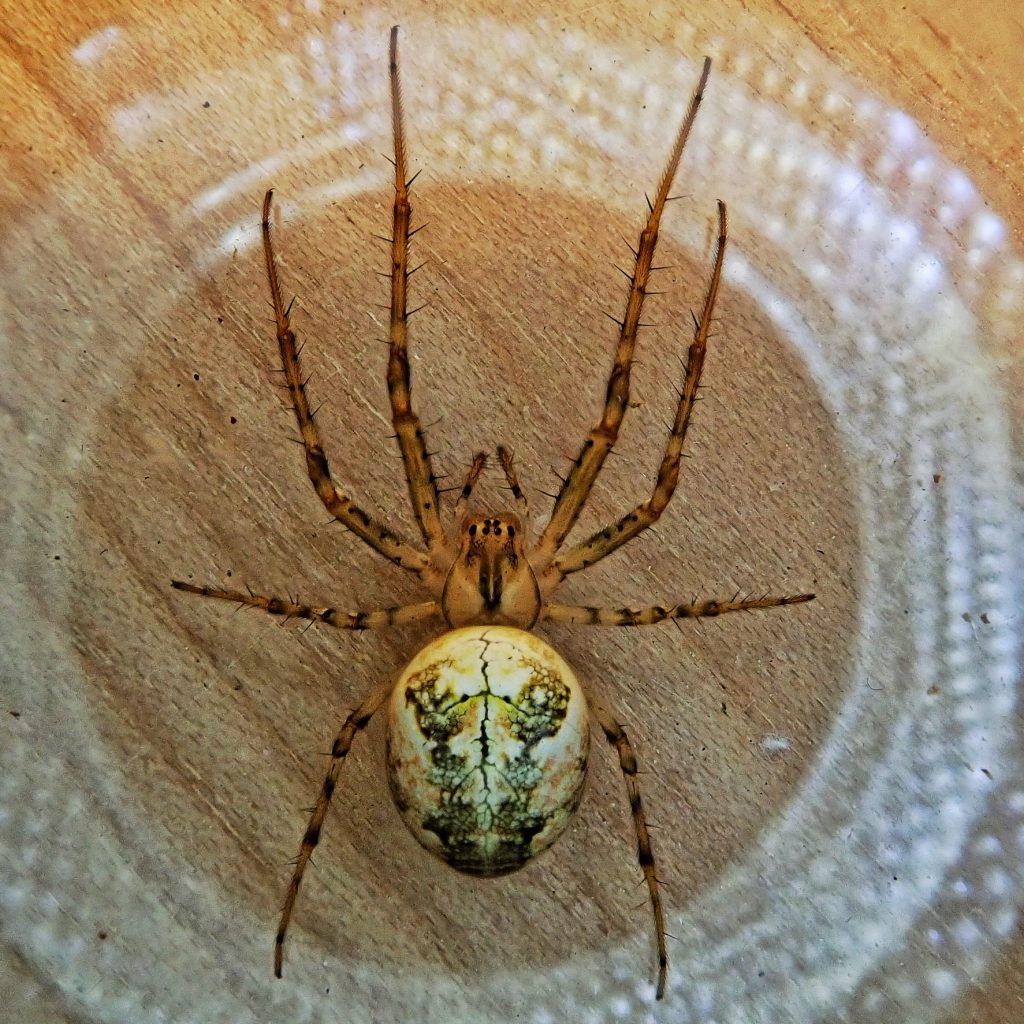
This is another critter I misidentified, although, ironically, it was only because I did more research. The first time I ran it through the spider key I came up with Metellina. And looking at BugGuide I was thinking it was probably segmentata. But my spider keys only go to the genus. A friend knew of a Metellina key to species, sent me a link, and I confirmed my identification. Except that I then noticed that, according to the literature I had available, the Metellina spp. only get to 5mm max, and this girl was almost 9mm. Back to the drawing board.
I went through the key from the beginning this time, not assuming that the large chelicerae (toothed jaws) automatically put this in Tetragnathidae. When I got to the couplet about endites I went the wrong way because by now I had convinced myself it was in Zygiella, which has long jaws and used to be considered a Tetragnathid. I forced it through the keys until I arrived at Zygiella dispar, and sent my conclusions and a bunch of photos to Rod Crawford, arachnid curator at the Burke Museum.
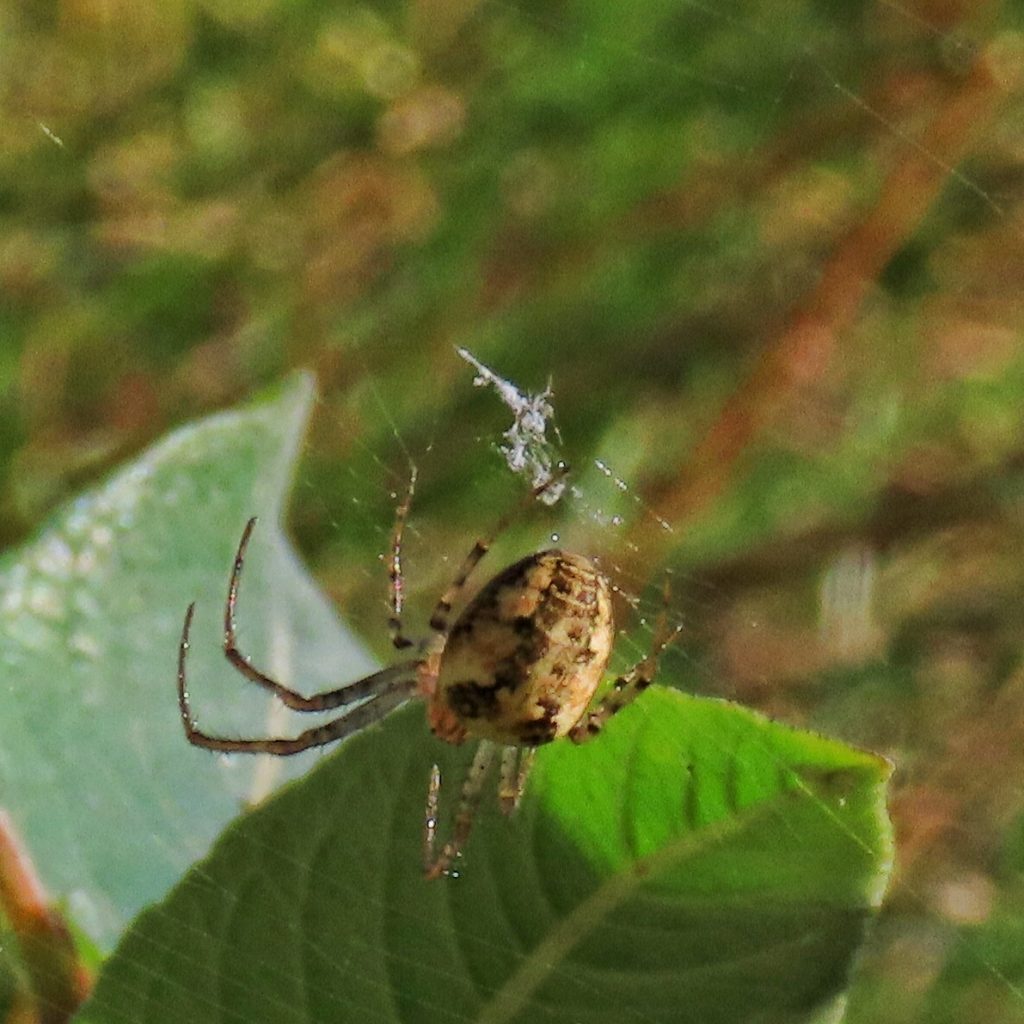
Who soon replied with four reasons it couldn’t be a Zygiella, and that it was clearly Metellina segmentata, and that while the size was at the top end of the range, it was in the range. He also informed me that it had a classic Metellina web and that I needed to pay closer attention to the webs because much diagnostic information could be gathered from the structure of the web. He graciously failed to add ‘you idiot’, probably because he knew I had correctly figured that part out.
And, speaking of Rod Crawford, this is from the preface to his “An Annotated Checklist of the Spiders of Washington “(1988); “Finally, a word to arachnological beginners. If you are new to spider identification, please be aware that to identify even a single spider to species level with reasonable accuracy requires examining genitalia and other tiny body parts with a powerful microscope. Naive persons almost always assume that one identifies spiders by color or “markings” or whole-body appearance, and that the best tool for identification would be a set of photos of entire spider bodies. No such luck! Trying to use whole-body photos for species level identification of spiders, might be compared with trying to construct a computer microchip using a baseball bat. It can’t be done, even by an expert. “
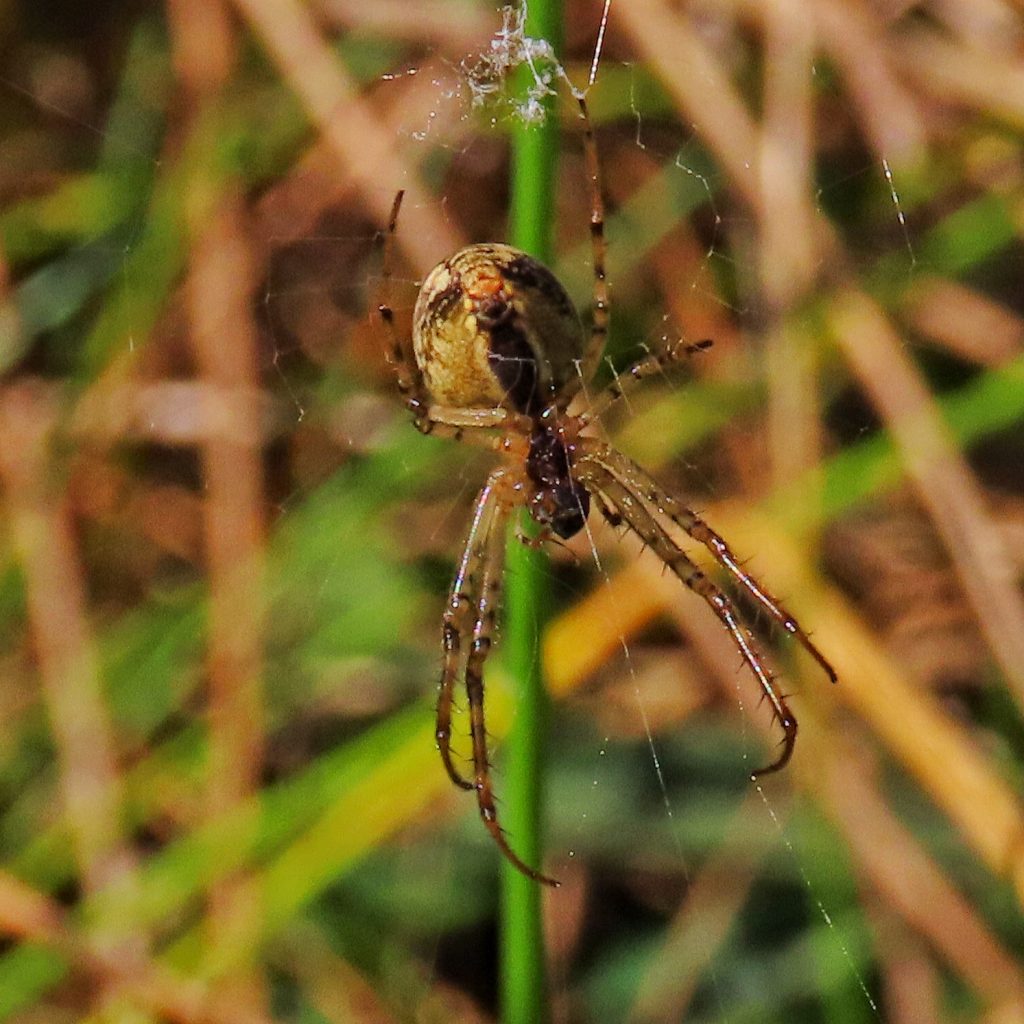
Description– Small spider (body length 6-9mm) Red carapace with dark central markings. Thin red and black banded legs, the first pair much longer than the second. Abdomen light with indistinct dark markings, and a ‘cracked’ looking dark, branching line in the center. Ventral side of abdomen has dark center bordered by light, parallel lines. Chelicerae noticeably large and long. Web has an open hub, but is otherwise complete.
Similar species– Other Metellina spp. somewhat smaller, very similar pattern and proportions. Can only be separated with microscopic analysis. Zygiella spp. have stouter legs with more black than red. Also have proportionally shorter chelicerae, and the posterior eye row is procurved (curving forward) whereas in Metellina it is recurved (curving backward). Web has a pie shaped open area, or if it is complete then the hub is filled.
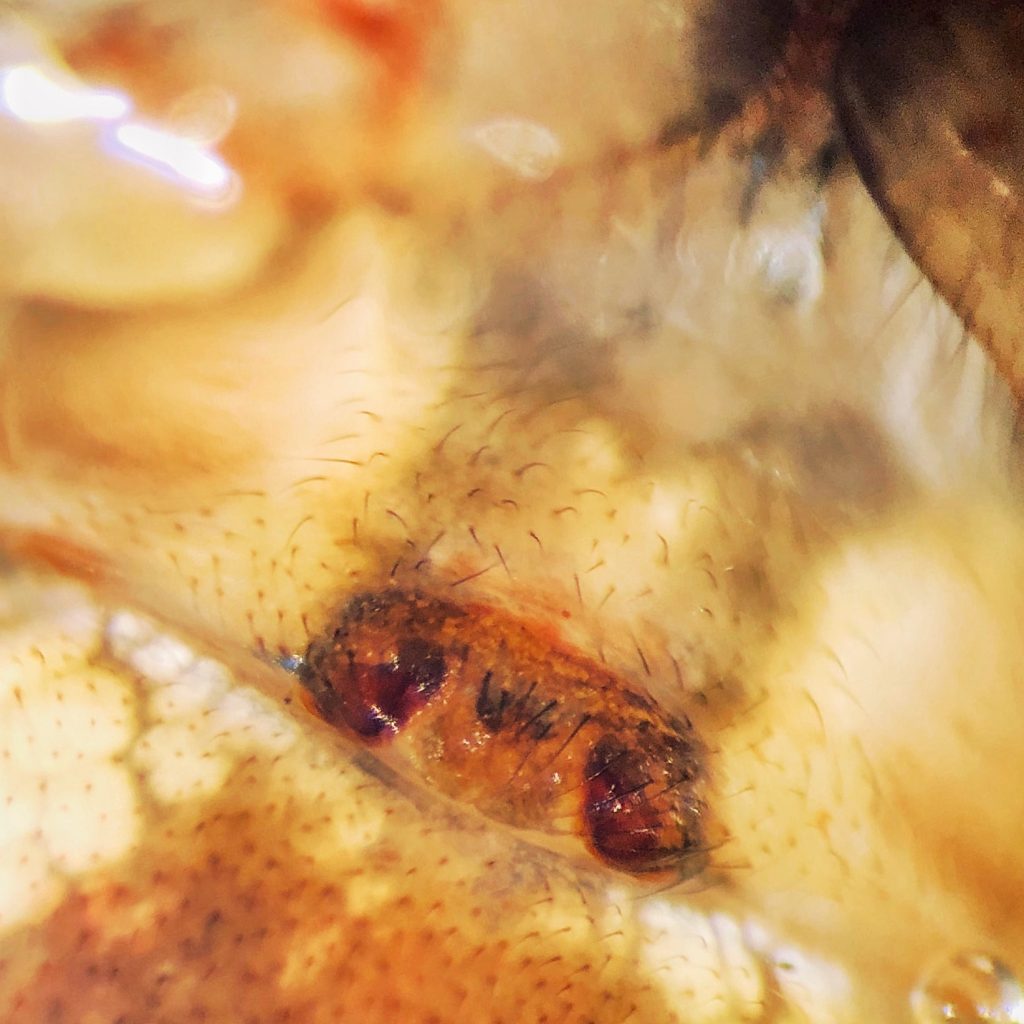
Habitat-Forest edges and open brushy areas. Often found near water.
Range-Non-native European import. Thus far only found in western Washington and western BC
Eats– Anything it can subdue in its web
Eaten by– Mostly birds, although pirate spiders get their share.
Adults active– July through November
Etymology of names–Metellina is the diminutive of metella, which means ‘a basket or crate filled with stones for hurling at besiegers”, which may have something to do with the web, though I can’t say for sure. What I do know is that the Romans must’ve had a serious problem with besiegers for a noun so specific. “Oh my god, don’t tell me you forgot the metella! Don’t you know it’s besieger season? We’re doomed!” The species epithet segmentata means segmented, but again I cannot ascertain what that references.
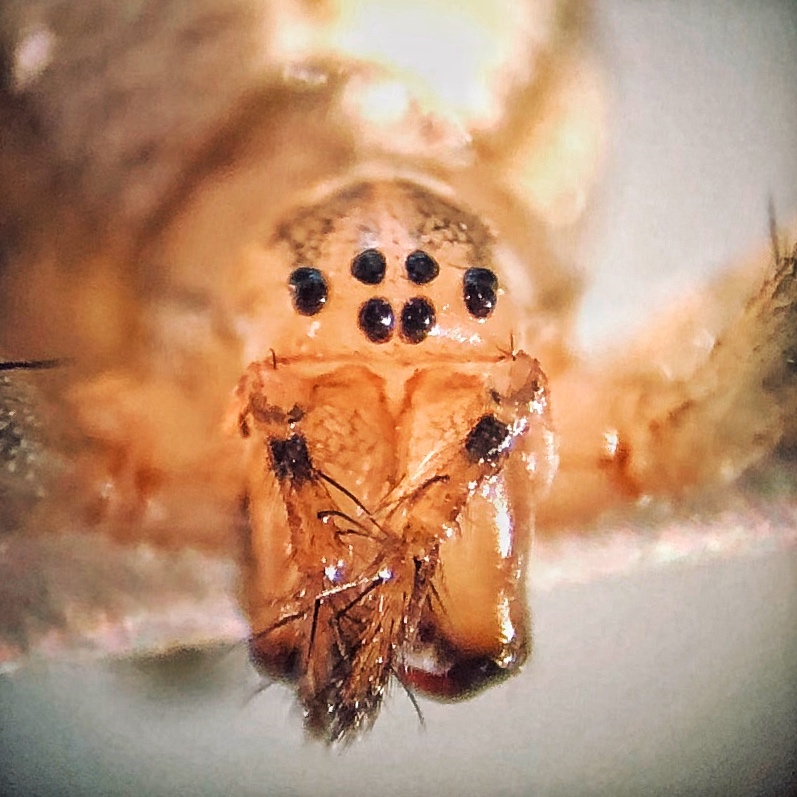
https://bugguide.net/node/view/153661
https://www.naturespot.org.uk/species/metellina-segmentata
http://srs.britishspiders.org.uk/portal.php/p/Summary/s/Metellina+segmentata+sens.+str.
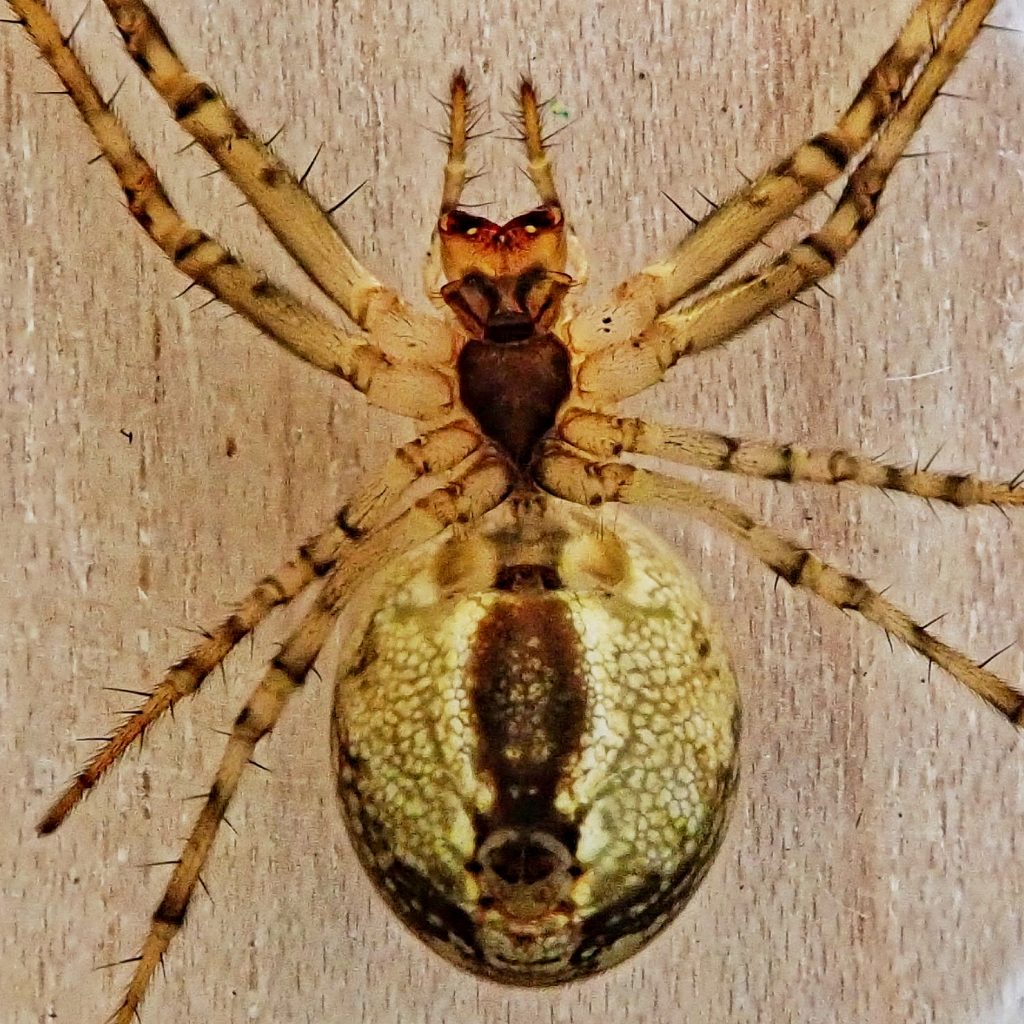
🤣
Well the eyes look a bit like a collection of stones. That is amusing that there is such a specific word – metella. I will be sure to bring my metella next time we are hiking where there are bears!